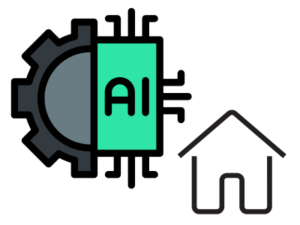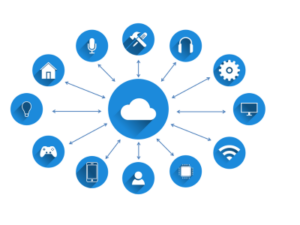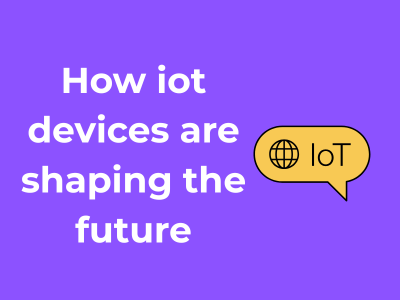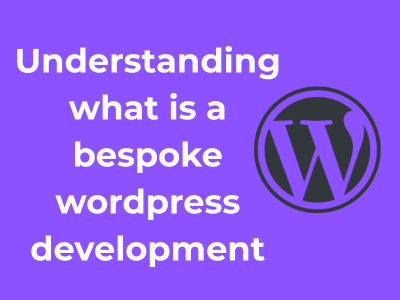Have you ever wondered what it would be like if your home appliances weren’t just tools but intelligent partners that work alongside you to make life easier? Thanks to IoT (Internet of Things) technology, that dream is not just a sci-fi fantasy anymore. Everyday appliances are being transformed into innovative smart companions, and the results are pretty amazing.
From Traditional to Smart
Let’s take a moment to appreciate how far we’ve come. Not too long ago, appliances were designed to perform a single function, like cooking, cleaning, or keeping food fresh. Now, with IoT, these same appliances can connect to the internet, communicate with one another, and even respond to your voice commands. Simply put, they’re becoming smarter and way more helpful.
- Hello, Smart Refrigerator! Today’s smart fridges go beyond keeping your groceries cool. With their IoT integration, they can notify you via an app when you’re running low on milk, suggest recipes based on the items inside, and even let you peek inside remotely while you’re at the store.
- The Evolution of Ovens and Cooktops: IoT-enabled ovens can adjust cooking temperatures automatically, notify you when your food is ready, or even allow you to preheat the oven from your phone while you’re still on your way home.
- Tidying Up Without Lifting a Finger: Robotic vacuum cleaners are some of the most recognizable IoT devices of all. These little wonders can map your home, clean rooms on a schedule, and be commanded to focus on specific areas, all with remarkable ease.
Why Are Smart Appliances Such a Game Changer?
Here’s why these IoT-powered smart devices aren’t just trendy gadgets—they’re tools of empowerment. By automating mundane tasks and learning from your daily habits, smart appliances save your most valuable resource: time.
Plus, they’re not just about convenience. Smart devices often include energy-efficient features that can lower costs and reduce environmental impact. Imagine a washing machine that detects load size and adjusts water and detergent use accordingly. Suddenly, it’s saving both water and money—talk about a win-win!
Voice Tech & NLP: The Future of Human-Machine Interaction: Read more
Making the Transition Easy
For those of you who feel intimidated by this jump to smart appliances, don’t worry! It’s not about replacing every gadget in your home overnight. You don’t need to turn your house into a super-sleek, voice-controlled hub in one big leap. Start small, with just one or two appliances—a smart thermostat or a smart plug, for instance. These devices are often affordable, easy to install, and will give you a taste of how IoT can simplify your life.
Simple Tips to Maximize Smart Appliance Use
- Ensure Compatibility: Make sure your smart devices can communicate with your smartphone or other standard hubs like Alexa, Google Home, or Apple HomeKit.
- Use Scheduling Features: Schedule tasks like vacuuming or turning on the oven in advance to make the most of automation.
- Keep Devices Up-to-Date: Just like your phone, smart appliances need software updates. These updates often include new features or improve security.
IoT-Based Security: Protecting Homes with Intelligence

Let’s face it – nothing is more important than feeling safe in your own home. When it comes to security, the Internet of Things (IoT) has stepped in as the ultimate game-changer. Gone are the days of traditional locks and simple alarm systems. With IoT-based security devices, you get a smart, intuitive defense system at your fingertips. Sounds impressive, doesn’t it? Let’s dive into what makes this technology so exciting and impactful for home automation!
Cameras That Go Beyond Just Surveillance
IoT security cameras are not your average record-and-store devices. These advanced tools can detect movement, differentiate between a person and a tree swaying in the wind, and even recognize faces in some cases. Connected to your smartphone or tablet, these cameras allow real-time monitoring – whether you’re next door or across the globe. With features like two-way voice communication, you can even interact with someone standing at your front door without opening it!
Smart Locks: Convenience Meets Security
Say goodbye to the stress of wondering, “Did I lock the door?” Smart locks powered by IoT take your security to the next level. With features like biometric authentication (fingerprint or facial recognition), temporary access codes, and remote locking/unlocking, your front door becomes a barrier that adapts to your lifestyle. For example, you can grant limited access to house cleaners or delivery personnel, all while keeping track of who enters and exits your home.
Smoke and Leak Detectors That Speak to You
Traditional smoke or carbon monoxide detectors do their job, but IoT-enabled devices take it several notches higher. These smart detectors not only alert you when something goes wrong, but they can also notify you through your smartphone, ensuring that you’re aware of hazards even when you’re not at home. IoT-enabled water leak sensors work similarly – detecting and notifying you of leaks, helping stop potential disasters before they cost you a fortune in repairs.
Integrated Alarms for Full-House Protection
IoT transforms standalone alarms into an interconnected shield for your home. Imagine an alarm that doesn’t just go off with a loud noise but also sends alerts to your devices and even contacts emergency services. Better yet, many modern systems can integrate with other smart home features, such as automatically unlocking doors to allow safe evacuation or turning on all lights to deter intruders. It’s like having a digital guardian watching over your home 24/7.
Pro Tips for Maximizing IoT Security
- Invest in a secure Wi-Fi network: Make sure your home network is protected with strong passwords and encryption to block unauthorized access.
- Keep your devices updated: Updating your firmware helps patch vulnerabilities and ensures optimal performance for your IoT devices.
- Utilize multi-factor authentication: For enhanced protection, use multi-factor authentication on apps connected to your security devices.
- Monitor logs regularly: Many devices keep activity logs so you can track unusual movements or attempted access.
Energy Management in Your Hands
Imagine having full control over your home’s energy consumption without even having to be physically there. Sounds futuristic, right? Well, it’s not the distant future anymore; it’s happening today thanks to IoT (Internet of Things) devices. Energy management, once a complicated game of guesswork, has now turned smart and seamless. Let’s dive into how these IoT devices are putting energy efficiency right at your fingertips.
Why Energy Management Matters
Managing energy effectively isn’t just about saving a few bucks on your monthly utility bill (although that’s a great perk!). It also means reducing your environmental footprint and contributing to a greener planet. With IoT, you’re not just a consumer; you’re a proactive participant in global energy sustainability. Now, doesn’t that feel empowering?
The Role of IoT Devices in Energy Management
IoT devices are changing the game when it comes to energy use. Here’s how they are helping you take the reins:
- Smart Meters: Gone are the times of estimated bills! Smart meters track your energy usage in real time. They give you insights on when and how you’re using energy, so you can scale back during peak hours or spot areas where you’re wasting power.
- Smart Thermostats: Thermostats like Nest or Ecobee can learn your daily habits and adjust heating and cooling accordingly. Imagine walking into a perfectly cozy home on a winter evening without ever lifting a finger. Plus, they help ensure you’re not heating an empty house when you’re away—talk about efficiency!
- Smart Plugs and Outlets: Did you forget to turn off that coffee maker before you left for work? No problem. Smart plugs allow you to switch off devices remotely and monitor how much energy specific appliances are consuming.
- Energy Automation: Many IoT systems allow scheduling, so certain devices only operate during off-peak hours. For example, you might program your washing machine to kick on when electricity rates drop overnight—it’s budgeting meets convenience!
Putting Energy Management in Simple Steps
You don’t need to be a tech wizard to get started with IoT-based energy management. Here are a few steps to consider:
- Start Small: Begin with one or two devices, like a smart thermostat or smart plugs. Test the waters and see how the changes affect your energy bills.
- Monitor and Adjust: Use the data from your IoT devices to create an energy-saving strategy. Understanding your consumption habits is the first step to making impactful changes.
- Integrate and Expand: Gradually add more IoT devices that complement your lifestyle and needs. As you build out your smart energy ecosystem, the potential for savings and convenience grows exponentially.
Connected Entertainment for Effortless Living

Let’s face it—after a long day, entertainment is often the way we unwind, isn’t it? Whether you’re binge-watching your favorite series, blasting tunes in your living room, or setting the perfect mood for a dinner party, IoT devices are revolutionizing how we experience entertainment right in the comfort of our homes.
The Magic of a Unified System
Gone are the days when you had to fumble around with multiple remotes or dive into multiple apps to control your TV, speakers, and gaming consoles. With IoT-based entertainment hubs, every device works in harmony. Streaming platforms sync with smart TVs, audio can be transferred seamlessly to multi-room speakers, and even your lights dim automatically at the start of a movie!
- Voice-Activated Commands: Imagine simply saying, “Play my ‘Feel-Good’ playlist,” and the speakers across your home energize the room in an instant.
- Unified Control Apps: Forget switching between apps to control individual devices. You have one app to rule them all, making adjustments quick and hassle-free.
Custom Playlists and Personalization Galore
IoT knows your preferences better than you might think! By leveraging data and personalized algorithms, many systems tune in to your tastes, offering music, movies, and even podcasts matched to your mood. For example:
- Your streaming services can suggest what to watch next based on your past preferences.
- Smart speakers create playlists tailored to the weather or even time of day—it’s like having your intuition amplified by tech!
And the best part? You get these personalized experiences automatically, without lifting a finger.
Gaming Elevated to the Next Level
Here’s an exciting one for you gamers out there. Picture this: You’re in the middle of a gaming session on your console, and your gaming chair automatically adjusts for ergonomic comfort, your lights shift to an immersive red hue, and noise-cancelling tech blocks out background distractions. IoT has your back for a completely immersive experience! Plus, cloud gaming platforms enhanced by IoT are allowing you to play console-quality games straight on your smart TV without needing bulky setups. It’s effortless living, redefined.
Entertainment That’s Eco-Friendly
Besides the fun, IoT systems are also becoming increasingly eco-conscious. If you walk out of a room, your devices can turn off automatically to save power. Not using your speakers or TV? They’ll switch to energy-saving modes. It’s technology acting smarter so you don’t have to consciously think about it.
Tips to Create Your Connected Entertainment System
If you’re feeling inspired to jump on the IoT entertainment train, here are a few handy tips:
- Start with Essentials: If you’re new to IoT, begin small—perhaps a smart TV paired with a voice-activated assistant like Google Assistant or Alexa.
- Invest in Multi-Compatibility Devices: Look for products known for integrating well across platforms. No one likes incompatible tech!
- Secure Your Network: Entertainment devices often connect via Wi-Fi. Use strong passwords and enable firmware updates to keep them—and your data—safe.
Customizing Comfort: Temperature, Lights, and Beyond
Imagine walking into your home, and everything is just perfect—your favorite lighting mood, a cozy temperature, and even automated adjustments based on your preferences. Thanks to IoT (Internet of Things) devices, this isn’t just some sci-fi fantasy. It’s today’s reality! Let’s explore how IoT is leading the way in creating bespoke comfort like never before.
Temperature Tailored to You!
Gone are the days of manually adjusting the thermostat. Smart thermostats like the Nest, Ecobee, and Honeywell take comfort to a whole new level. These IoT-powered devices learn your daily routine, preferences, and even factor in weather forecasts to keep your home at the perfect temperature, effortlessly.
- Feeling chilly after a long day? A smart thermostat knows when you’re on your way home and can preheat your house.
- Concerned about energy bills? These devices detect when no one’s home and optimize settings to save energy without sacrificing comfort.
- Many systems can even integrate with voice assistants like Alexa or Google Assistant, so you can adjust your temperature with a simple voice command. “Hello, comfy!”
Tip: When buying a smart thermostat, look for energy-saving certifications. They’ll ensure you get optimal comfort while being kind to your wallet and the planet!
The Art of Mood Lighting
Lighting sets the mood for living spaces, and IoT devices let you control it with unprecedented precision. From smart bulbs like Philips Hue to more sophisticated lighting hubs, you can change brightness, colors, and even designs with just a tap on your smartphone.
- Morning Bliss: Program your lights to emulate sunlight and gradually brighten in the morning, gently waking you up.
- Cozy Evenings: Switch to warm and soft lighting while you enjoy your favorite book or movie.
- Party-Ready: Create dynamic light patterns to entertain your guests with vibrant and colorful settings. Who needs a disco ball?
- Eco-Smart: Many IoT lighting systems are energy-efficient and can even turn off automatically when you leave a room!
Beyond Lights and Temperature—The Future of Custom Comfort
The beauty of IoT is its limitless ability to adapt to your needs. Nowadays, smart devices extend well beyond thermostats and lights to cover nearly every corner of your home.
- Use smart blinds to let in natural sunlight during the day and auto-close them in the evenings for privacy.
- Enjoy customized aromatherapy through smart diffusers—whether it’s lavender to relax or citrus to energize.
- Even your mattress can now be smart! IoT-enabled beds adjust firmness, track sleep quality, and help you wake up refreshed.
Bringing It All Together
What’s most exciting about customizing comfort is how seamlessly all these features work when integrated. IoT hubs like Samsung SmartThings or Apple’s HomeKit allow you to connect your devices for total control. Imagine creating a single command—“Goodnight”—that turns off unnecessary lights, adjusts your thermostat, and dims the lighting, paving way for a restful evening. Sounds dreamy, doesn’t it?
With IoT redefining comfort, the only limit is your imagination. By combining convenience, personalization, and sustainability, these devices are setting the stage for a home that truly revolves around you.
Bridging Devices for Seamless Interaction
Have you ever dreamed of a home where all your devices work together harmoniously, like a symphony orchestra performing a flawless concert? Well, IoT technology is making that dream a reality by bridging devices for seamless interaction. Let’s dive right into how this works and why it’s amazing for your home automation experience.
What Does “Bridging Devices” Even Mean?
Good question! Bridging devices simply means connecting multiple devices so they can communicate and work as one cohesive system. The idea is to eliminate the gaps between various gadgets, making sure they all integrate smoothly to perform coordinated actions. Think of it as your devices becoming one big happy family!
The Magic of a Unified Ecosystem
Imagine walking into your home after a long day. The lights brighten just enough to feel welcoming, your smart speaker recommends a playlist based on your mood, the thermostat has already adjusted to your favorite cozy temperature, and a notification pops up letting you know the laundry is done. All these interactions happen without you lifting a finger—thanks to one crucial ingredient: a unified ecosystem.
Unified ecosystems are the result of IoT-enabled hubs, like smart speakers or dedicated apps, that connect multiple devices from different brands. They enable these devices to interact with one another as if they’re part of one team. Wondering which hubs work best? Platforms like Google Home, Amazon Alexa, and Apple’s HomeKit are great places to start!
Why Seamless Interaction Matters
Okay, so seamless interaction sounds cool, but why is it such a big deal? Here’s why:
- Convenience: No more juggling multiple apps and remotes. A connected home talks to itself so you don’t have to micromanage.
- Time-saving: Who has the time to tinker with tech all day? Bridging devices handles the small stuff so you can focus on what matters.
- Improved Functionality: When devices work together, they can offer capabilities that wouldn’t be possible if they operated in isolation. For example, pairing motion sensors with lights to create a hands-free lighting experience.
Making the Transition to a Connected Home
So, how do you get started with bridging your devices? First, make sure the devices you’re buying are compatible with the hub or ecosystem you prefer. Look out for labels like “Works with Alexa” or “Compatible with Google Assistant.” It’s also a good idea to invest in devices that support multiple protocols like Wi-Fi, Zigbee, or Z-Wave to ensure greater flexibility when adding other gadgets to your setup.
Secondly, don’t be afraid to experiment! You can start small, connecting just your lights and thermostat, and gradually expand as you get more confident in wielding your smart home powers. Pro tip: Try automating a daily routine, like having your coffee maker start brewing as your alarm goes off. Trust us; you’ll never want to go back!
The Future of Bridging Devices
As IoT technology continues to evolve, we can expect even smoother interactions between an increasing number of gadgets. Cross-brand collaborations will likely rise, meaning a future where your fridge and vacuum cleaner happily work side-by-side is just around the corner!
So, embrace the limitless possibilities of seamless interaction and start building your own smart home symphony. As more devices bridge together, the harmony of convenience and innovation will only get better. And honestly—who wouldn’t want that?
How Data Insights Drive Smarter Decision Making
Let’s talk about data—yes, the often-overlooked hero of the IoT revolution that’s driving smart home automation to the next level. Ever wondered how your smart thermostat seemingly “knows” the perfect temperature for your living space or why your virtual assistant can suggest the best lighting setup during your evening movie? The answer lies in data insights. Let me walk you through why they’re so essential and how they’re shaping smarter decisions for your home!
The Power of Data Collection
Here’s the thing: every smart home device you use is diligently gathering data. Sensors on your smart speakers, light bulbs, thermostats, and even your connected refrigerator are monitoring your interactions, preferences, and usage patterns. Now, this isn’t about being nosy—it’s about understanding you. By analyzing this data, IoT devices can tailor their performance to suit your lifestyle.
- Example 1: A smart thermostat uses insights from your daily habits—like when you turn on the heat—to create schedules that not only keep you cozy but also conserve energy when you’re out.
- Example 2: That robotic vacuum? Yes, it’s mapping your home and figuring out the most efficient cleaning routes based on how often certain areas are used.
Pretty fascinating, right?
Personalization Through Data Insights
One of the coolest things about data in home automation is the level of personalization it enables. It’s like having a home that understands what you need before you even realize it. Through data insights:
- Smart assistants: Devices like Alexa or Google Assistant can recommend playlists, set reminders based on your preferences, or even suggest meal prep ideas based on your fridge inventory.
- Lighting settings: Automated lighting systems can adjust brightness and colors to match your circadian rhythm, promoting healthier sleep cycles and better focus during the day.
- Enhanced routines: Many IoT apps allow you to create customized “scenes” for different times of day, like a morning wake-up routine that combines lighting, music, and coffee brewing—all based on the patterns these devices observe over time.
With every “smart” interaction, your home gets a little, well, smarter!
A Word on Privacy and Security
Now, I understand the word “data” might raise a flag of concern. How do you ensure your personal information is safe while embracing all these efficiencies? That’s where being proactive matters:
- Ensure your devices are equipped with encryption features. Most reputable brands prioritize this.
- Regularly update your smart devices to patch any vulnerabilities.
- Consider setting strong, unique passwords for IoT accounts and utilize two-factor authentication where available.
By taking these precautions, you can enjoy the benefits of data-driven decision-making without compromising your security.











